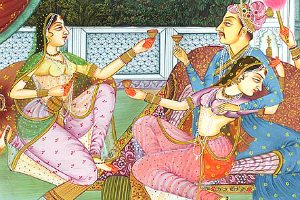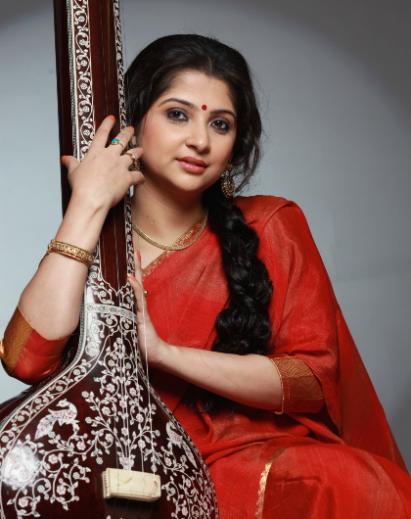In the movie Devdas (2002) directed by Sanjay Leela Bhansali, the protagonist played by popular actor Shah Rukh Khan says, “Aurat maa hoti hai, bahen hoti hai, patni hoti hai, dost hoti hai … aur jab woh kuch nahi hoti, toh tawaif hoti hai“. That incidentally is a summation of our attitudes towards the Tawaif or Nautch Girls…women who were accomplished and highly acclaimed singers, dancers and poets, honed to perfection under the Hindustani Classical genre, but who were later relegated to the depraved status of prostitutes, driven to near penury under the Colonial rule and thereafter.
Courtesan history documents that young girls were taken under the tutelage of eminent classical musicians, dancers and poets in the Mughal period, a time when art and culture received much attention and aesthetics flourished like never before. As the patronage of music, dance and poetry/Shayeri in the Mughal courts grew, performing arts became a viable option for many who had interest, potential, and skill set. For years the girls were trained to achieve the heights in this musical and literary tradition.

Courtesan history documents that little girls were taken under the tutelage of eminent classical musicians, dancers and poets in the Mughal period, a time when art and culture received much attention and aesthetics flourished like never before.
In the Mughal courts especially in the Doab region, the tradition flourished. Thumri, Khayal, Dadra, Tappa, Ghazals took on a resplendence that dazzled. The women called Tawaifs entertained high class nobility and tutored young Nawabs in the finer nuances of language, manners and cultural refinement. These women were looked upon with respect and they were under no obligation to sexually service their patrons. Of course they could choose to be with any man of their choice and this aspect made them quite powerful.
Women like Begum Samru, Ad Begum, Moran Sarkar, Binodini Dasi, Begum Hazrat Mahal, Gauhar Jaan, Akhtari Bai, Rasoolan Bai and several others held sway over the music scene in the country and took forward the tradition of Hindustani Classical music. These women were stalwarts who not only sang but also created musical motifs set to a raaga. They used folk songs and put them to more complex constructions and created semi classical arrangements like Chaiti and Kajri. Sublime couplets were set to ghazals and thumris.

Image Source: Every Object Tells A Story

Image Source: Wikipedia
As the court rooms came alive with dance, music and poetry lesser artists put up their offerings while the best was reserved for a small set of upper class genteel. The members were treated to Khayal compositions, the most imaginative and complex pieces in the hierarchy of Classical music. This was a time when Classical art form reached its zenith and in the luminous sky were extraordinary stars whose contributions to Hindustani Classical art form and Urdu poetry continue to assail our senses.
Documented evidence captures the decline of these women who belonged to this world of tameez and tehzeeb. Mayank Asten Soofi in his book on courtesans and the effects of colonisation and urbanisation on their trade and lives ‘Nobody Can Love You More: Life in Delhi’s Red Light District’ talks of Chawri Bazaar aligned next to the Jama Masjid which would throb with action in the Mughal period. Women would be divided into four categories – the domni, bedni, tawaif, and randi. The randi stood at the top of the hierarchy and it is therefore hardly surprising that there exists a Randi ka Maqbara (loosely translated as The Whore’s Tomb) which is dedicated to an unknown courtesan belonging to Akbar’s period. It is located on GT Road in district Attock, Punjab (Pakistan).

Image Source: Flickr
As the court rooms came alive with dance, music and poetry lesser artists put up their offerings while the best was reserved for a small set of upper class genteel. The members were treated to khayal compositions, the most imaginative and complex pieces in the hierarchy of Classical Music.
Mubarak Begum, another famous dancer had a mosque built in her name called Randi-ki-Masjid in Delhi’s Lal Kuan area. Built in 1823, Mubarak Begum was a high class courtesan who rose to great prominence with her skills. She was a principal player in Delhi’s cultural landscape and is said to have hosted several prominent poetry soirées including the Akhri Shama of which the great poet Mirza Ghalib was a part. She caught the eye of Sir David Ochterlony, first British resident to India and apparently married him or as some sources say became his principal mistress.
Whatever it is, she ruled the mushairas with her astounding poetic, dancing and musical abilities and after her death a mosque was built in her name. The name is crude even as the mosque is small, quaint, delicate and homely. Outside, as the busy Delhi life continues with its high pitched, untuned noises; the insides of the mosque muffle the sounds as if rising to protect the soul resting in its recess from the unsympathetic world outside.
In later years courtesans were dismissed as whores, a fall out of colonial hegemony and cultural reductionism. The British established linguistic superiority as a starting point. Thereafter every cultural aspect—food, language, dance, music, clothing—was undermined and ridiculed. Colonial attire, ways of eating, food, music, dance were touted as refined and sophisticated ways of the civilised world. So the courtesan music was pronounced as lewd, coarse, unrefined…from high class, accomplished dancers, poets, artists, they became ‘nautch-girls’, the term loaded with derogation, opening grounds for social exclusion.
Historian Veena Talwar Oldenberg who has thrown considerable light on the social marginalisation of the courtesan community in her papers says that, “In present-day Delhi or Lucknow, one is unlikely to encounter the kothas (rooms) or tawaifs of yore…” Ditto with Chawri Bazaar’s Bazaar-ae-Husn which saw courtesans and girls of varying skill and beauty gather and showcase their talents. Now the place sells tiles, taps, sanitary products and even cards. From the delicate, lattice framed homes they were forced to relocate to places on the outskirts of the city. Like GB Road in Delhi where the subtle differences in what they could offer had no significance to the place and people. With time the places became open to sexual exploitation, a hub for body business. The randi, the tawaif, the bedni, domni all became ordinary prostitutes. A society worth its morality could not admit to their existence. They became the ‘Women of the Twilight Zone’, of great curiosity and interest and equally of repulsion and exclusion.
Also read: Indrani Rahman: The Glamour Girl Of Indian Classical Dance| #IndianWomenInHistory
Popular media constructions have also taken this prototype of a tawaif forward. So in most films, barring serious outings like Umrao Jaan or Begum Jaan, tawaifs have been showed to be the fallen woman, the dangerous other, positioned by patriarchal and puritanical constructs to exist ‘outside’ and, in opposition to the family and society. Ruth Vanita, author of Dancing with the Nation says that in most movies the tawaif is shown to be “educated, self-employed, even wealthy, modern women, who are agents of desire, and often single mothers“. The Courtesan values her independence and that is what makes her such a fearsome prospect for a patriarchal society.
Colonial attire, ways of eating, food, music, dance were touted as refined and sophisticated ways of the civilised world. So the courtesan music was pronounced as lewd, coarse, unrefined.
The immeasurable contribution of tawaifs to Hindustani Classical music has been recognised in recent times…enough for people to start talking about them in public discourse. Accomplished classical artists like Kaushiki Chakraborty, Shubha Mudgal who not only understand the nuances of this genre but also understand the bhav or emotional content in the tawaif creations of thumri, ghazal etc. by dint of being women are quite intent on acknowledging the great contribution by these courtesans.

Image Source: JustDial

Image Source: Shubha Mudgal
At Tehzeeb-e-Tawaif, a symposium on Courtesan Culture, Shubha Mudgal acknowledged the same although she believed that the current intimate and erotic renditions on cine screen have relegated thumris to a more frivolous status in relation to the sombre khayal. Incidentally most male classical singers stick to the khayal or bhajan. Women classical artists however dabble in thumris giving to the audience a glimpse into the past when passion, emotion, sophistication, skill, talent, semantic wizardry, melody, aesthetics came together in grand luminosity.
Kaushiki Chakraborty with her band Sakhi pays homage to these women who had been responsible for keeping alive the Hindustani Classical form for almost 400 years. In every performance that the band undertakes, all the women band members perform the Kanjari. Kanjari is the name used for prostitutes in Punjabi. The pimp is called the Kanjar. The Sakhis believe that every song that is sung today can ultimately be traced to the songs of the courtesans who were later on unfairly likened to Kanjaris. So the band finishes each performance with a song and dance act (which is purely classical in essence) as a way of homage.
Also read: Begum Hazrat Mahal – Courtesan, Queen And Military Leader | #IndianWomenInHistory
To return to the dialogue, Jo aurat Kuch na hoti to who tawaif hoti hai…perhaps it is time to revise these derogatory sentiments associated with tawaifs in particular and women in general. After all women aren’t just a composite of the roles they play. They have their own sense of identity. And perhaps when they aren’t bound by any role, that is when they are at their best: being women, responding to the feminine principle, forging an identity that they can truly own.
Featured Image Source: Ritika Banerjee for Feminism in India
About the author(s)
Saonli Hazra is an educator and runs Words’Worth. She is a government-approved trainer for English and also a freelance writer for Times Publications. She can be reached at saonlihazra@yahoo.com.





nice piece of literature,could we turn back time?